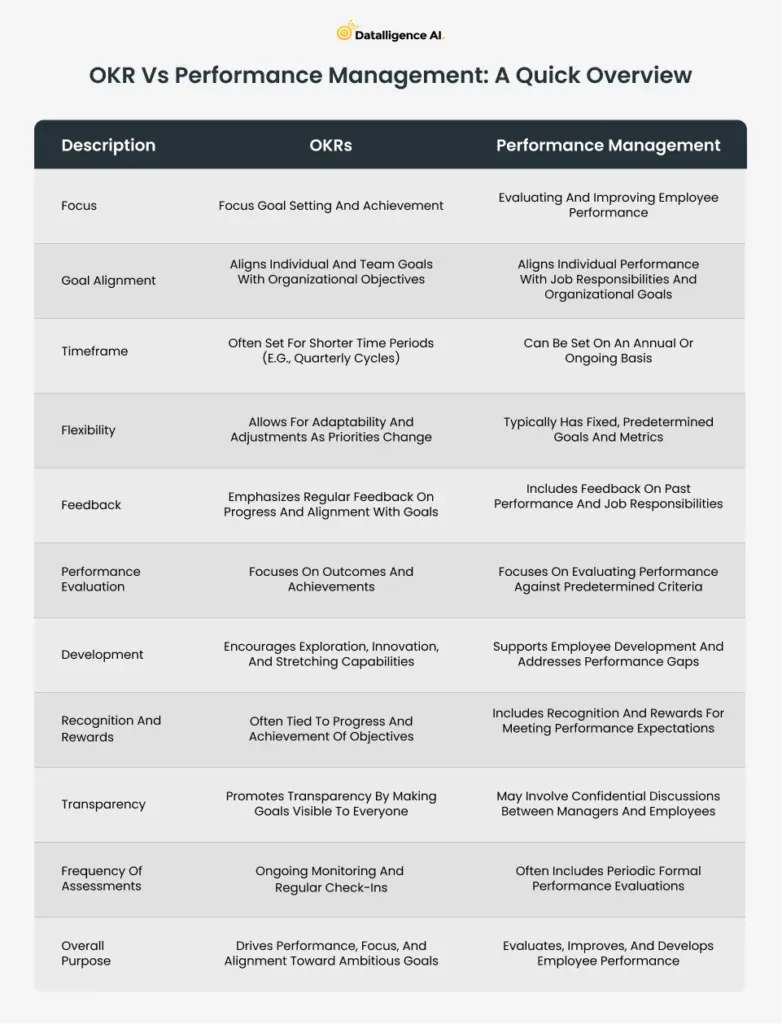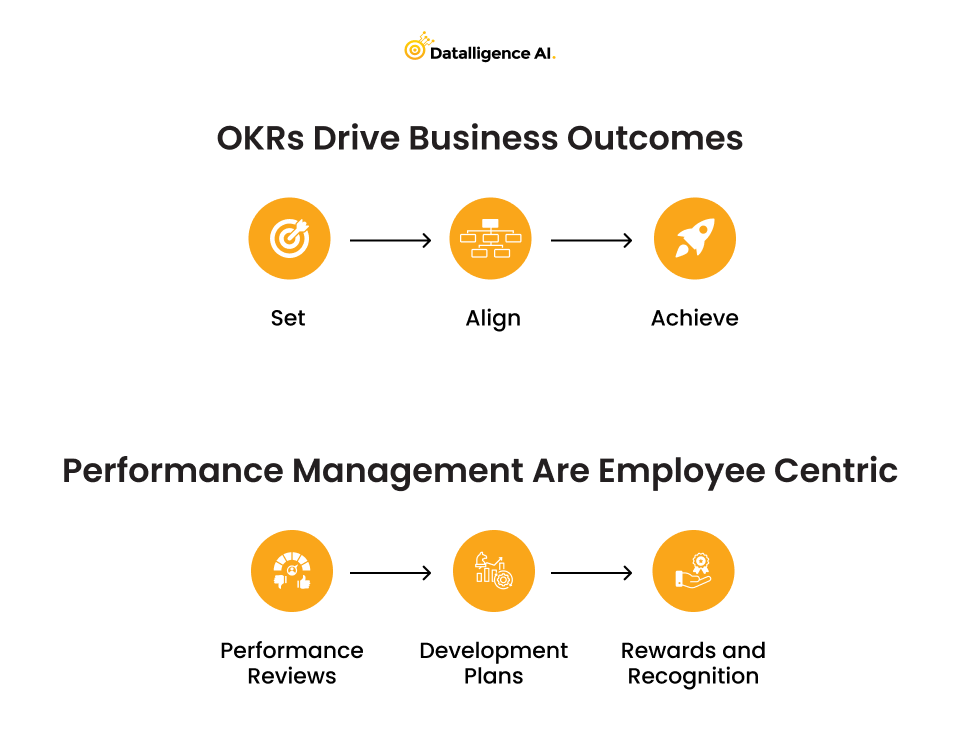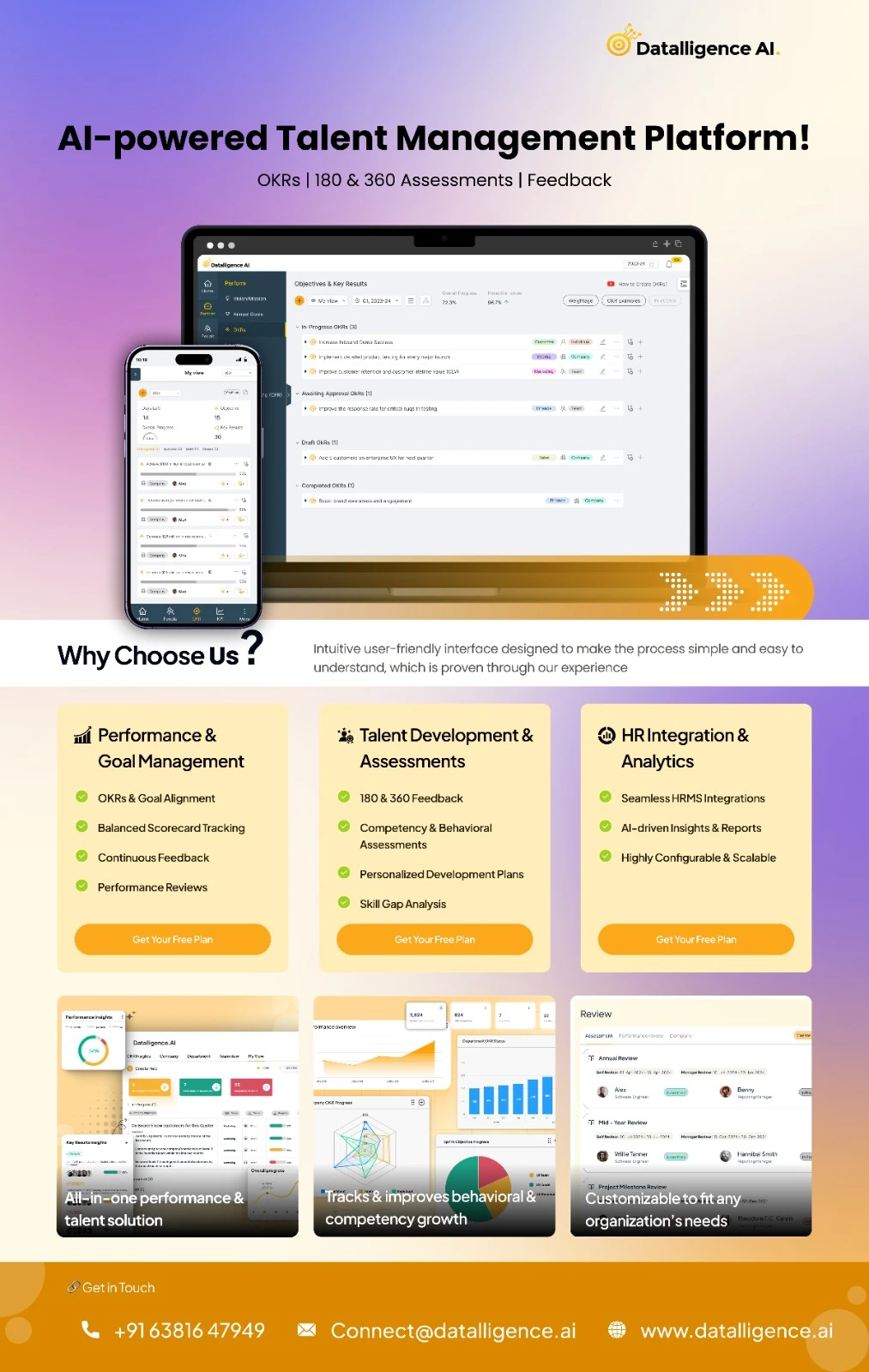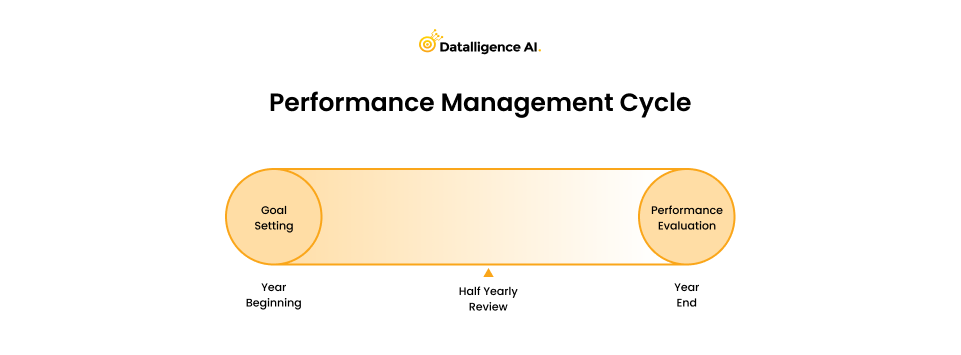OKRs continue to thrive as one of the most effective goal-setting tools in modern organizations. Widely adopted by companies across industries, their relevance has stood the test of time for over 40 years. In contrast, traditional performance appraisal systems especially annual reviews are losing traction, as they often lack the agility and real-time feedback today’s fast-paced work environments demand.
As a result, more companies are shifting toward agile performance management models that offer flexibility, transparency, and continuous improvement. OKRs are central to this evolution, reshaping how performance is tracked and goals are achieved.
In this blog, we’ll break down the key differences between OKRs and traditional performance appraisal methods, and explore how each serves different aspects of performance management.
What are OKRs?
OKRs (Objectives and Key Results) is a goal-setting framework designed to bring focus, alignment, and clarity to individuals and teams. It consists of:
Objectives: Ambitious, qualitative goals that define where you want to go.
Key Results: Measurable outcomes that show whether you’re getting there.
Unlike static appraisal systems, OKRs are dynamic and typically reviewed quarterly, allowing organizations to stay agile and responsive. The framework promotes ownership, fosters alignment, and motivates individuals to push boundaries while tracking measurable progress.
OKRs don’t just evaluate performance — they drive it.

The Power of OKRs in Driving Performance
The true strength of OKRs lies in their ability to bring focus, clarity, and alignment to organizational goals. By setting ambitious objectives paired with measurable key results, OKRs drive performance across all levels of the organization. They help create a culture where continuous improvement, accountability, and transparency are built into everyday work.
Key Features of Using OKRs:
Ambitious yet clear objectives aligned with strategic business goals
Quantifiable key results that indicate progress and define success
Frequent check-ins to review progress and adjust priorities
Cascading OKRs from company-level down to teams and individuals
A culture built on alignment, visibility, and consistent performance
When we explore the difference between OKRs and performance appraisals, it becomes clear that OKRs are more proactive, encouraging growth and forward-thinking rather than just evaluation.
What is a Performance Management System?
A Performance Management System is a structured framework organizations use to evaluate and improve performance at individual, team, and organizational levels. It involves setting expectations, monitoring progress, providing feedback, and conducting formal performance appraisals to assess outcomes and drive improvement.
Unlike OKRs, which focus on progress and agility, performance appraisals within traditional systems are more formal and often retrospective—looking back at past performance rather than enabling forward momentum.
Key Features of a Performance Management System:
Defined role expectations and structured evaluations
Periodic performance appraisals (usually annual or bi-annual)
Feedback mechanisms tied to compensation and promotions
Formal performance ratings and improvement plans
Emphasis on assessment over ongoing goal alignment
Understanding the difference between OKRs and performance appraisals is essential when choosing the right system to support your organization’s culture and growth strategy.
Key components of a Performance management System may include:
- Goal Setting
- Regular Performance Feedback
- Performance Appraisal
- Development Planning
- Performance Recognition and Rewards
- Performance Improvement
OKR vs Performance Management: A Quick Overview

Key Focus of OKRs and Performance Management Systems
OKRs concentrate on business outcomes, whereas performance management concentrates on an employee’s job performance.

OKRs focus on the business.
These broader business metrics serve as indicators of the effectiveness of the OKRs in driving positive outcomes for the organization. OKRs specify what must be accomplished by the organization as a whole, a department, a team, or an individual during a specific quarter. Furthermore, how do they track their success in achieving their goals? The general expectation is that as they accomplish those goals, the company will perform better overall in terms of client satisfaction, revenue, product quality, and supplier satisfaction.
Performance reviews focus on an employee and how their skills match up to their job requirements. The focus is on the employee, on improving their performance in their current role, on periodically understanding and realigning their career aspirations, and on assisting them with their career path through coaching, training, and sponsored higher education. The intention is to empower employees with the necessary resources and support to enhance their skills, achieve their career goals, and contribute effectively to the organization’s success.
OKR Cycle and Performance Cycle
OKRs have a quicker drumbeat. Performance reviews are typically conducted once a year and are generally very involved.
| Assessment Period for OKRs | Assessment Periods for Performance Management |
|---|---|
| Weekly, occasionally every two weeks | Once or twice a year |
For OKRs
How is the cycle initiated for OKRs?
- Corporate, departmental, and team OKRs are created at the start of each quarter.
- Individual OKRs are developed and synchronized with team, department, and corporate OKRs.
How is the cycle put to rest for OKRs?
- Teams, departments, and employees conduct at the end of the quarter to share their learnings on how they performed against their OKRs.
- Teams, departments, and employees evaluate where they are with each OKR to determine whether it makes sense to wrap up the OKR as is or to extend it to the following quarter based on business needs.
- New OKRs are added at each level once more in accordance with business needs.
For Performance Management
How is the cycle initiated for Performance Management?
- The assessment cycle is started by HR Department.
- Employees are given a set of competencies that are relevant to their job performance based on their grades, and they will be evaluated on these competencies.
How is the cycle put to rest for Performance Management?
- The assessment cycle is started by the HR Department.
- Employees conduct a 360-degree self-evaluation and receive confidential feedback from peers and superiors.
- The employee and manager then meet to discuss the results of the evaluation.
- Plans are made for the upcoming review period.
Why you shouldn’t mix OKRs and performance management
While OKRs and performance management systems have overlapping elements and goals, there are some reasons why it might be challenging or less effective to mix the two approaches:
Different time horizons
Performance management often operates on an annual cycle, with goals and targets set at the beginning of the year and evaluated at the end. In contrast, OKRs are typically set for shorter periods, such as quarterly cycles. This discrepancy in time horizons can lead to confusion and misalignment, as individuals may need to balance long-term performance objectives with shorter-term OKRs.
Fixed vs. Fluid Goals
Performance management often relies on predetermined and fixed targets, whereas OKRs emphasize setting ambitious and adaptable goals. When OKRs and performance metrics are intertwined, individuals may feel constrained by rigid performance criteria, limiting their ability to pursue innovative and game-changing objectives. This can hinder creativity, exploration, and risk-taking, which are key components of OKRs.
Accountability vs. Development
Performance management systems are often associated with evaluating and holding employees accountable for meeting predefined targets. In contrast, OKRs are intended to inspire and challenge individuals and teams to stretch their capabilities and drive innovation.
Combining the two approaches can create tension between accountability and the freedom to explore new ideas and take risks.
Complexity and Burden
Introducing both OKRs and performance management systems simultaneously can create a complex and burdensome process for employees and managers. It may lead to overlapping or redundant activities, such as tracking progress on OKRs and meeting the requirements of performance evaluations, which can be time-consuming and create confusion.
Feedback and Recognition
OKRs encourage regular feedback and recognition for progress made towards objectives. Performance management systems also incorporate feedback, but they often focus on past performance evaluations rather than ongoing progress.
The mix of the two approaches can create ambiguity regarding the frequency and purpose of feedback and recognition, potentially diminishing their effectiveness.
Conclusion
In conclusion, understanding the difference between OKRs and performance appraisals highlights a clear shift in how organizations approach goal-setting and performance. While traditional performance appraisals focus on evaluating past performance against predefined criteria, OKRs center around setting ambitious goals and tracking them through measurable outcomes—encouraging ongoing growth and agility.
With Datalligence, organizations can fully leverage the OKR framework to align team efforts with strategic business goals. This not only improves clarity and accountability but also drives real business impact—boosting profitability, streamlining operations, and supporting data-driven decision-making.
Talk to our Experts and Coaches and gain more insights or try Datalligence for free.















